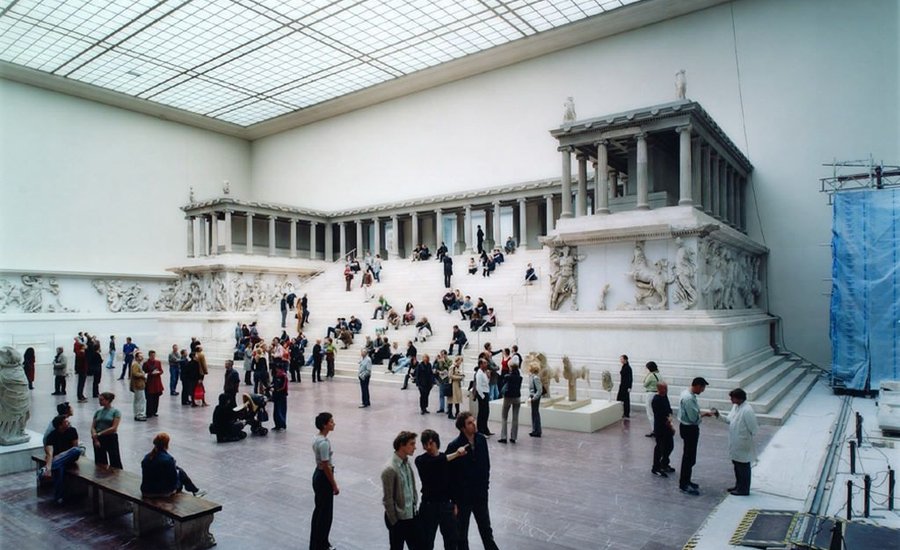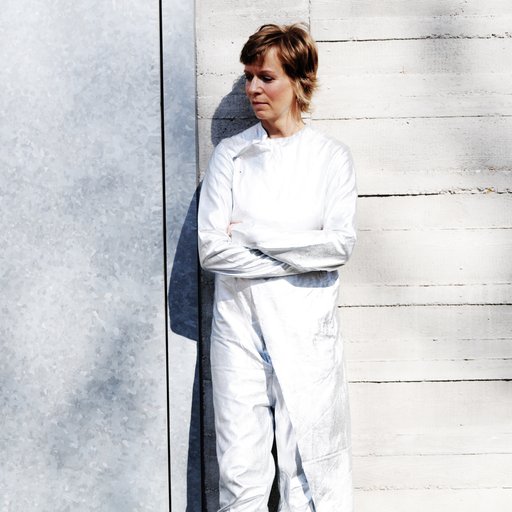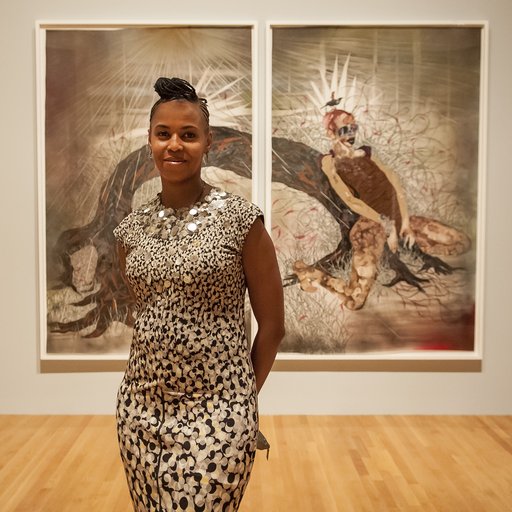Since its inception in the early 1800s, photography has been the site of immense change as it evolved from a scientific challenge to a world-shaking mass medium over the past 200 years. The digital revolution of the new millennium has brought on both never-before-seen capabilities and a new ubiquity of the photographed image, developments artists have eagerly explored and exploited. These eight works, each excerpted from Phaidon’s The 21st Century Art Book, are some of the shining examples of fine art photography from the past 15 years.
PERGAMON MUSEUM 1, BERLIN
Thomas Struth
2001
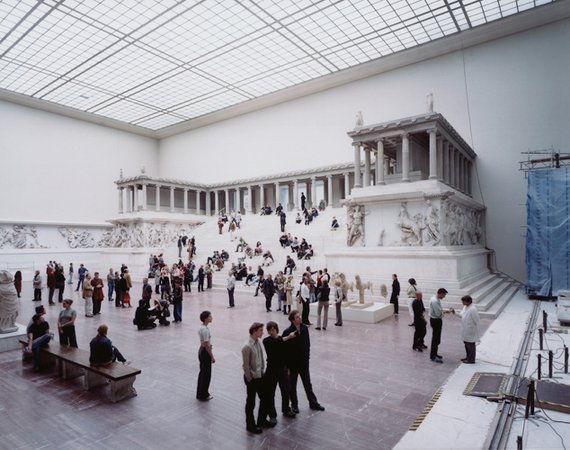
The Pergamon Altar was excavated and removed from Turkey in the late nineteenth century by the German archaeologist Carl Humann; today it is the centerpiece of the Pergamon Museum in Berlin. In Struth’s photograph the altar is not in fact the subject of the image so much as the background against which museum visitors are caught in states of reflection, distraction, or conversation. Struth’s series of large-scale and sharply detailed photographs of museum interiors, begun in 1989, shares with his portraits, landscapes, and cityscapes a deceptive sense of detached objectivity. The German artist’s pictures are in fact packed with provocative information about the way society views its culture and environment. In Pergamon Museum No. 1, Berlin, for instance, Struth reveals how the altar continues to be a place of contemporary pilgrimage. Visitors relax on the altar’s steps as if oblivious to the ancient edifice’s incongruous new home inside a modern museum.
FREISCHWIMMER 25
Wolfgang Tillmans
2003
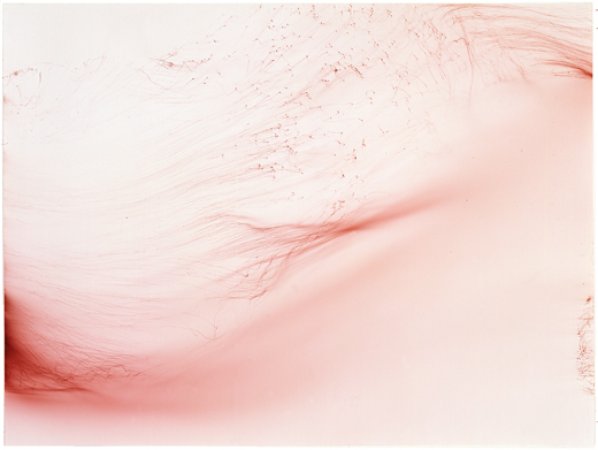
Hair-like strands of color swirl across a clear background, sometimes blurred, sometimes sharply delineated. Pigment appears to be dissolving in liquid, or is this a flock of starlings at dusk? Freischwimmer 25 is one of a series of images in which Tillmans has used purely photographic processes to directly capture light in fluid, painterly marks. Though abstract, there is a sense that these are drawings of moving light. Tillmans rose to prominence with his casually styled work, which was published in style magazines and resembled a mix of fashion photography and reportage. He continues to mix observational photography with abstract work, often montaged in his signature displays in which photographs, magazine cuttings and photocopies are taped directly onto the wall at different heights and arranged in vitrines or on tables. By rearranging and re-contextualizing, Tillmans creates new associations and narratives. In 2000 he was the first photographer to be awarded the Tate’s Turner Prize.
SELF PORTRAIT/NURSING
Catherine Opie
2004

Since the late 1980s, Opie has been documenting diverse communities, sometimes through images of groups of people, sometimes through pictures of their environments, and sometimes in portraits of individuals. When she began photographing her own Queer and S&M community in San Francisco she included a number of self-portraits in the body of work. Self-Portrait/Pervert (1994), for example, is an arresting image, showing the artist wearing a black hood over her head, needles piercing her arms and the word "pervert" cut into her chest. Self Portrait/Nursing, taken a decade later, shows Opie tenderly breastfeeding her son, the scars of her earlier incisions still faintly visible. These intimate images are contrasted with series such as High School Football (2008) and Surfers (2003), both of which see the artist looking at subcultures from an external, more distanced perspective.
UNTITLED (BARRAGAN HOUSE, #01)
Luisa Lambri
2005

Though they frequently feature architectural masterpieces by canonical architects, Lambri’s photographs forgo the conventional exterior view by which these buildings are generally known. Instead, Lambri spends extended periods of time inside, and takes photographs of closely cropped details that, were it not for her titles, would be hard to identify except by someone who had also spent time in the building. Many of her locations are famous examples of domestic architecture, such as R.M. Schindler’s Kings Road House and Pierre Koenig’s Case Study House #22, both in Los Angeles, the city in which she now lives. Lambri’s subjective responses to these houses correspond to the interiority of her physical relation to them; she has described her photographs as self-portraits. Often, as with Untitled (Barragan House, #01), she focuses her camera on windows and the changing effects of light, in this instance in the home built by Luis Barragán for himself in Mexico City.
GRIEVING MOTHERS (ATTACHMENT)
Louise Lawler
2005

A pair of wings from a stone sculpture, possibly a classical statue of the goddess Nike, are shown strewn casually on the floor. Taken in close-up, the photograph does not reveal their setting, nor where the rest of the sculpture is, though the sharp metal spike that protrudes from one wing suggests they were attached to something larger. The wings seem vulnerable and abandoned, lacking the magnificence such sculptures usually exude and the title speaks of maternal loss. Since the late 1970s, Lawler has explored the presentation of artworks, in order to examine how the context in which we view art affects the way in which we understand or appreciate it. She has photographed paintings and sculptures in museums, galleries and auction houses, as well as in the homes of collectors. Lawler also photographs artworks in storage or during the process of installation, revealing how lost these pieces can seem when outside their usual environment.
JPEG BD01
Thomas Ruff
2007

Ruff is among a canonical generation of artist-photographers who studied under Bernd and Hilla Becher at the Kunstakademie Düsseldorf. He is often discussed alongside figures such as Andreas Gursky, Thomas Struth and Candida Höfer. Ruff’s large-scale prints speak more about the limits of photographic representation than about the medium’s ability to capture reality. A series of expressionless portraits from the 1980s reveal as little about the sitters as do Ruff’s series “Sterne,” from 1989, of the beautiful but fathomless night sky. More recently, Ruff reduced digital images to very low-resolution JPEG files, then printed them at large scale so that their pixellation obscures the subject. Many, like jpeg bd01, are based on images taken from the media, in this case the famous Burj Khalifa skyscraper in Dubai, pictured midway through construction, as if in acknowledgement of the simultaneous magnificence and incompleteness of the photograph itself.
LIGHTNING FIELDS 128
Hiroshi Sugimoto
2008

A bolt of electricity pierces a pitch black background. For this image, one of a series, Sugimoto was inspired by Benjamin Franklin’s and Michael Faraday’s early experiments with electricity, as well as the work of the photographic pioneer William Henry Fox Talbot. Sugimoto used a Van de Graaff 400,000 volt generator, applying the electrical charge directly onto photographic dry plates, so that the artworks were created without the use of a camera. The finished photographs resemble lightning bolts, and reveal the branch-like forms of the electrical charge in high detail. Sugimoto is also renowned for his Seascapes series, taken all over the world, as well as his photographs of buildings and interiors, which are shot out of focus using a theoretical technique he calls “Twice as Infinity,” giving the images an eerie, surreal finish. What unites much of the artist’s work is an interest in capturing on film the passing of time.
SEA OF FILES
Dayanita Singh
2013

A black and white photograph shows a rack of shelves on which are piled stacks of files, tied up in parcels. The dim lighting suggests a basement storeroom, an atmosphere of dust and neglect. This is one of a series of images, projected as a visual essay. They come from Singh’s own archive of images, collected over decades, of India’s public offices before digitalization made such records redundant. She shows a world of dereliction—shelves sagging under the weight of decaying paper, claustrophobic spaces overcrowded by walls of forgotten and abandoned documents. Singh has experimented with different ways of presenting her work as visual poetry, in the form of projections, books, or in portable “museums,” wooden structures that allow multiple images to be displayed in various configurations in order to create different narratives. She wants her photographs to be seen as interconnected bodies of work, rather than single images.











